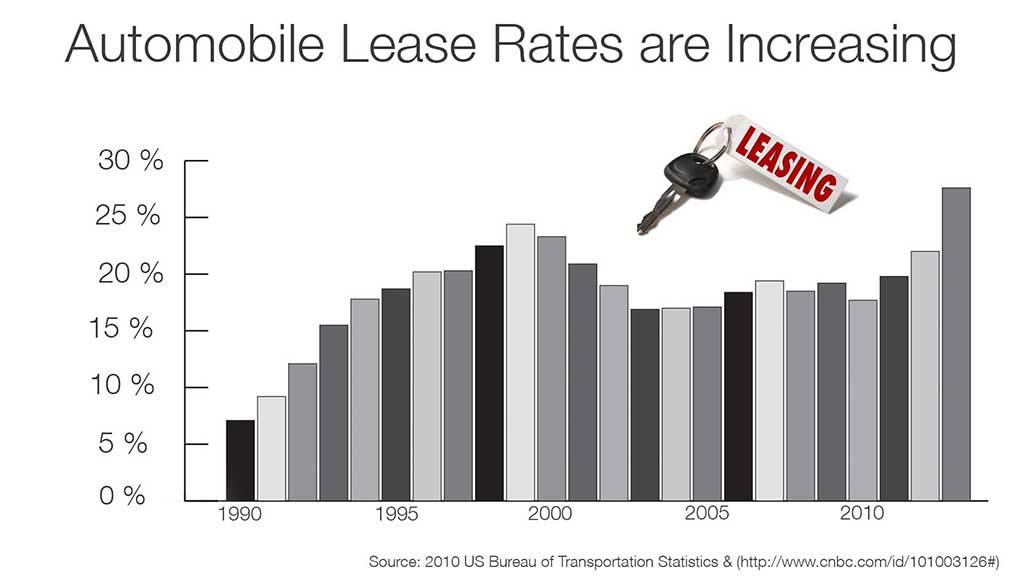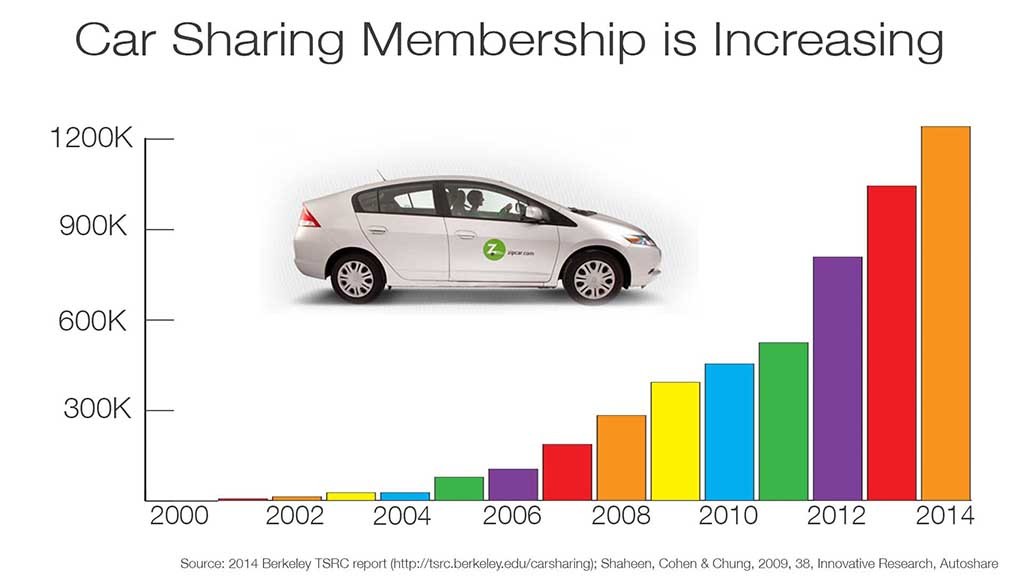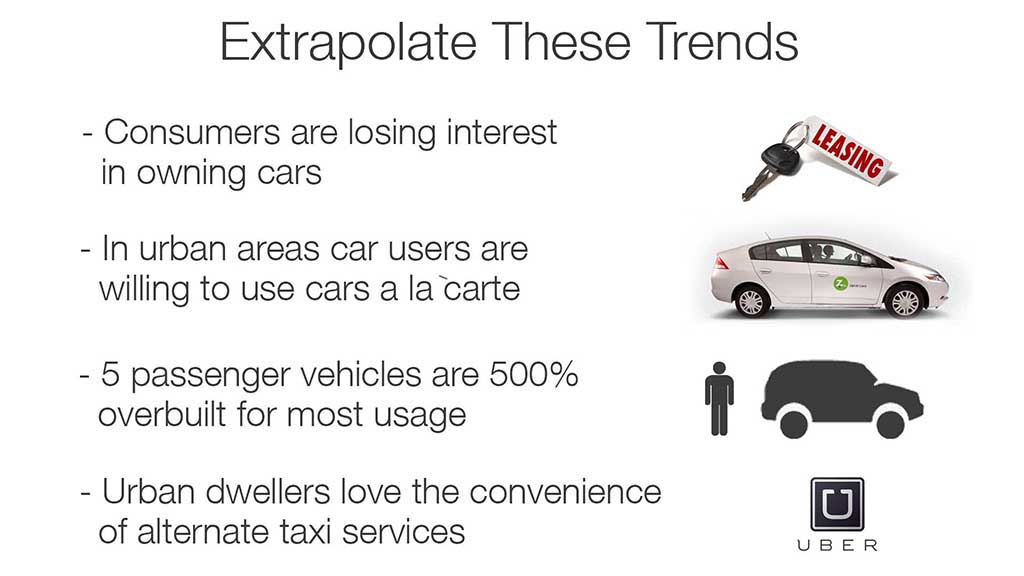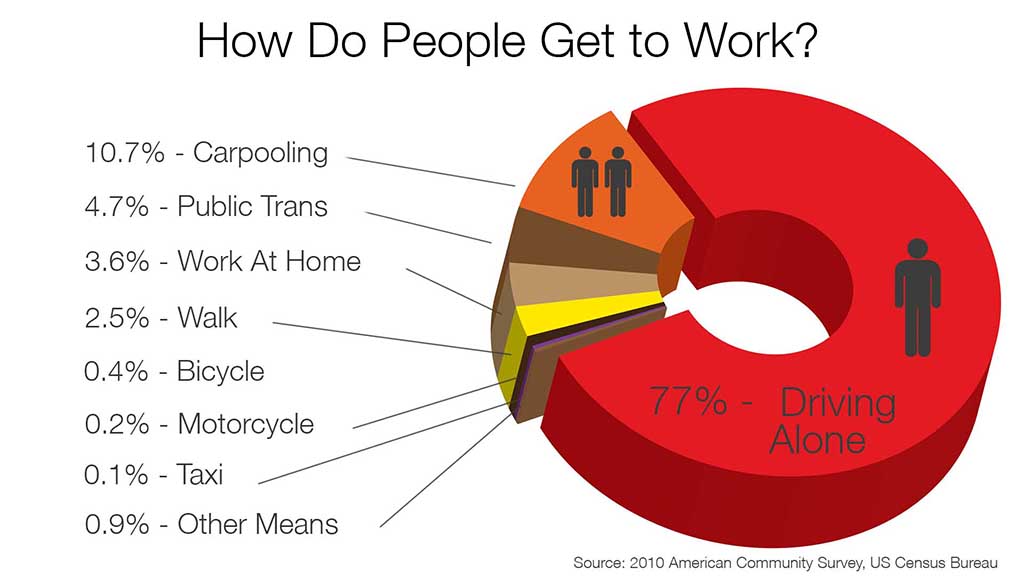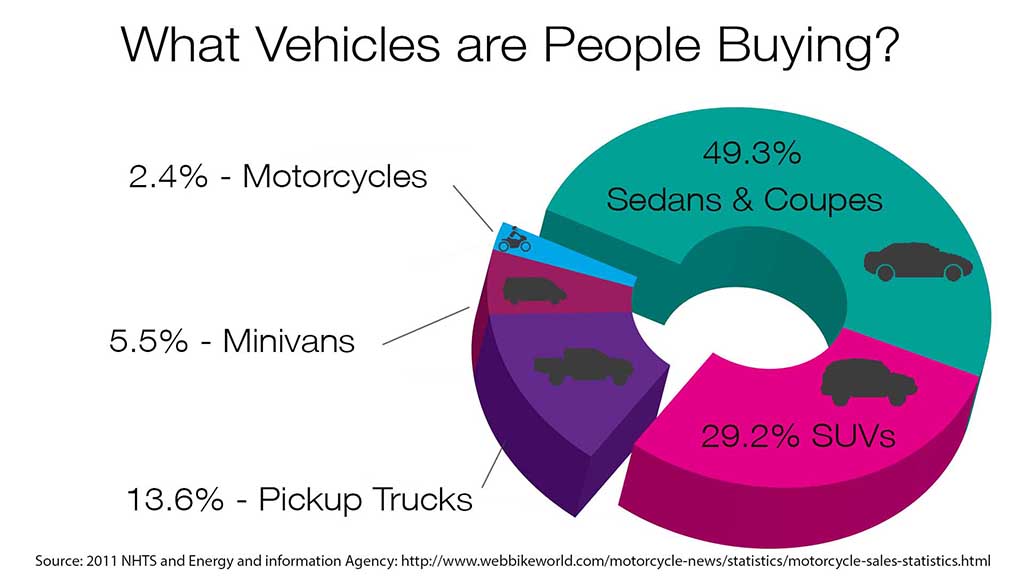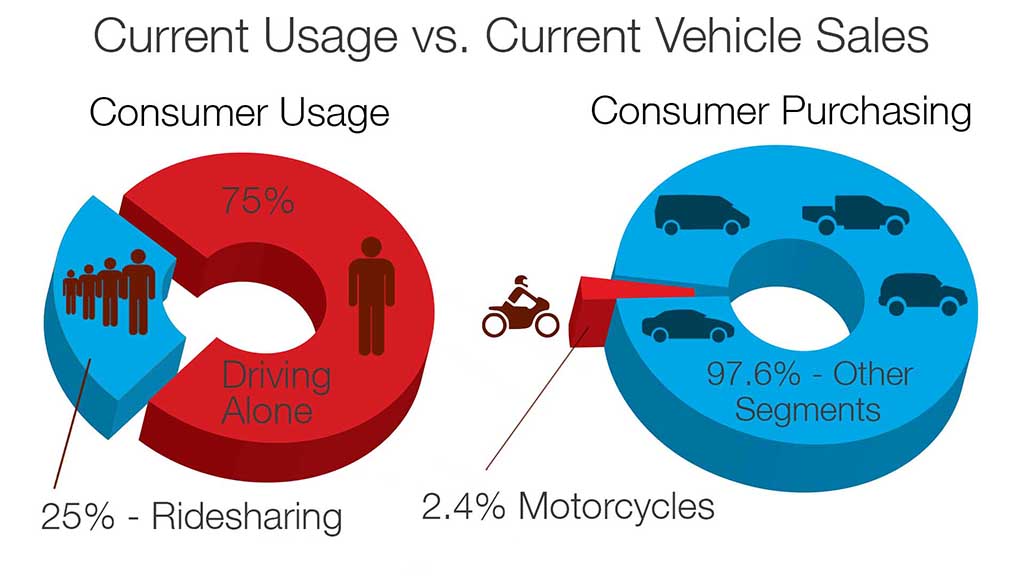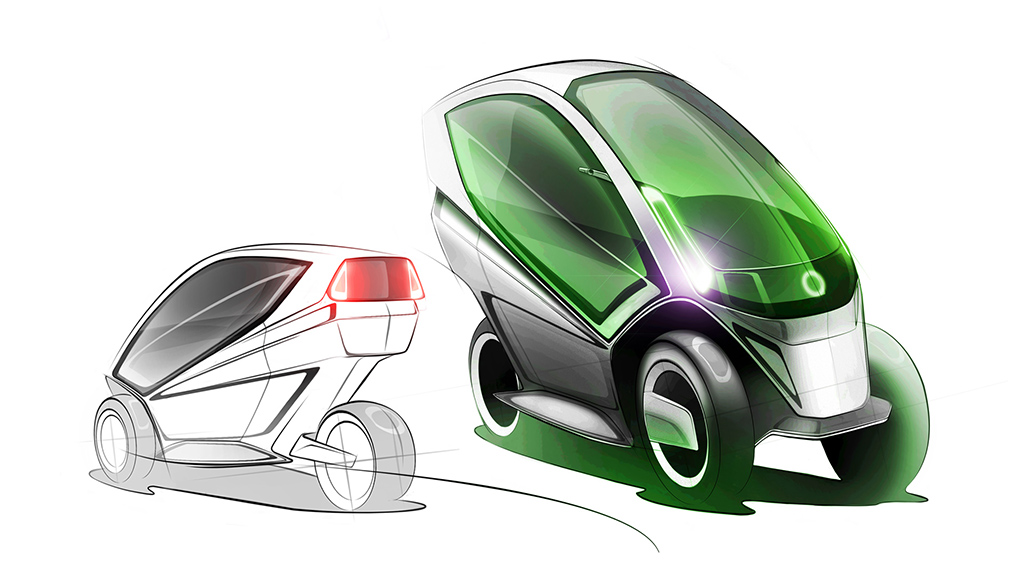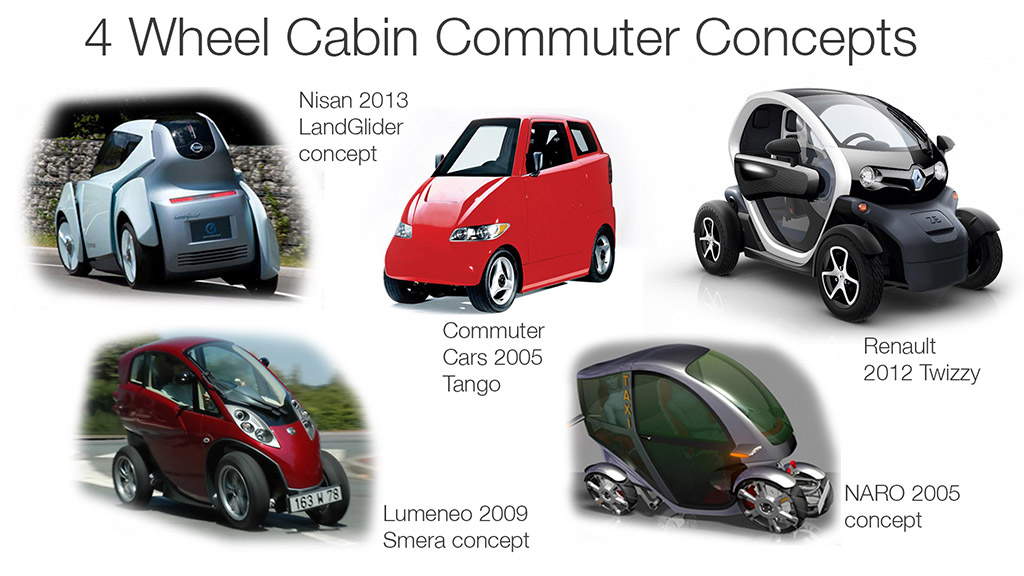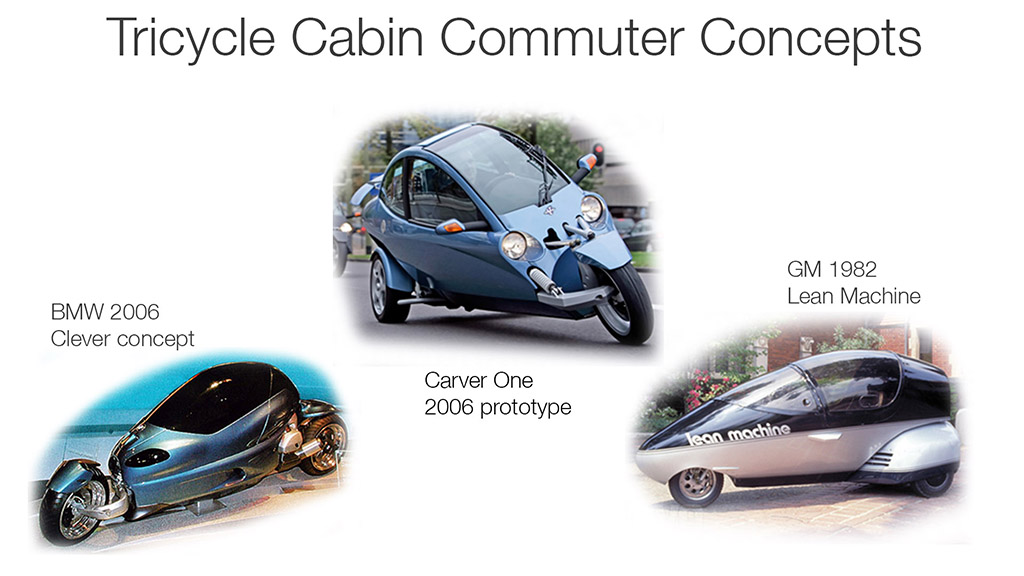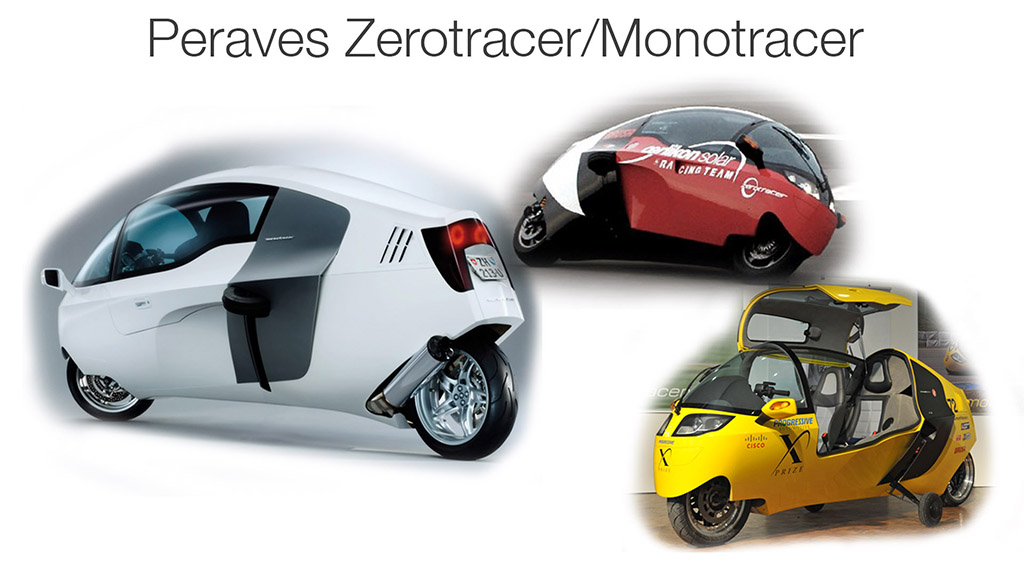Blog
Overview
Autonomous vehicles will cause the greatest social and economic transformation the human race has experienced since the advent of the internet, and possibly since the Industrial Revolution, once our society adopts this technology on a widespread basis. It will save over thirty thousand American lives1 and over two million injuries per year2, give Americans seventy-five billion hours3 of their time back, save consumers almost three trillion dollars of disposable income, solve a significant portion of our environmental crisis, electrify America’s automobile fleet, revolutionize urban planning, change the very physical infrastructure of our cities4 and quite possibly end terrorism. In addition to all these grand achievements, autonomous vehicle technology will also do little things for us like free us from having to take the kids to swimming lessons every day. Sounds incredible, right? That’s because it is incredible, but don’t forget that autonomous vehicle technology will also put seven million people in the unemployment line in its early days and if current auto manufacturers aren’t careful, it’s going to do to them what Netflix and Redbox did to Blockbuster Video ten years ago.
Autonomous vehicles are a disruptive technology that’s going to cause an explosion in on-demand car services like Lyft and Uber because it will ultimately allow those companies to provide transportation at a much lower cost than our current model of privately owned or leased cars, without any significant extra inconvenience to the consumer. Right now we pay to have twenty-four hour access to our vehicles, but we only use them four percent of the time.5 By taking advantage of shared car usage and the fact that autonomous technology will cut Uber’s costs to a fraction of their current level, on-demand use of cars will explode in the decades after autonomous cars debut. Or at least it will explode everywhere other than low density population areas like the rural Midwest, where I grew up. Once Uber and its competitors can transport a consumer for only a fraction of the cost of privately owning a car, consumers will gradually stop buying cars. This will take decades, but once this transformation is complete, transportation will be a service rather than a product in America. We, and indeed, the rest of the world, will all be traveling around in a fleet of shared vehicles that we as consumers do not personally own and which could be called “The Mobility Cloud“.
Once consumers are using The Mobility Cloud for all their transportation needs, then they are no longer forced to buy the same enormous five-passenger vehicle that constitutes the dominant automotive architecture sold in the world today. This is good, because about seventy-five percent of all driving is done solo with nothing but a personal bag, so there’s really no need to be driving around in a five-thousand pound SUV. We all know consumers love their big cars, but once private car ownership is made obsolete by The Mobility Cloud, the social nuances that incent people to unnecessarily purchase and use such large vehicles will be substantially weakened. Consumers will start to choose vehicles suited exactly to the driving task at hand. And the driving task at hand is mostly driving alone with no cargo. This means a notional single passenger vehicle, something that’s a cross between an upright TRON light cycle and the passenger half of a Smart Car, is going to usurp the five passenger vehicle as the world’s dominant automotive architecture. This single passenger vehicle, available autonomously on demand and ten to thirty times more energy efficient than private cars or even public transportation, will be the most important piece of transportation hardware technology our society has created since the Model-T because it just might end terrorism from oil producing nations with populations that don’t care much for America’s global military presence, bring transportation to more than a billion people in the developing world that can’t currently afford it and if current automobile manufacturers aren’t careful, it could put many of them out of business.
Obvious Reasons for Autonomous Vehicles
Autonomous vehicles will accomplish the following.
-
- Save 33,000 lives in America every year1 and prevent 2.5 million injuries.2
- Save 1.3 million lives internationally3, 600k of whom are innocent pedestrians that are just in the wrong place at the wrong time.
- Free up almost 3 trillion dollars of disposable income to American consumers.4
- Save Americans 75 billion hours of time.5
- Although autonomous vehicles will gradually destroy 7.5 million jobs just in America6 in their first few decades, if history is any guide, they will ultimately create even more new jobs than that.
Not-So-Obvious Reasons for (and Against) AV’s
Autonomous vehicles will also accomplish these things.
- Reduce the importation of oil, and end oil importation from The Middle East through creating economic conditions that favor electric vehicles.1
- Consequently make irrelevant the cultural conflict between Judeo-Christian and Islamic cultures that dominates global politics and trade today.2
- Remove the root source of terrorism.3
- Bankrupt many Middle Eastern economies.4
- Remove the means by which most municipalities collect a substantial amount of their revenue5
- Initially put 7 million people out of work in America, and more like thirty million internationally.6
- On a more personal note, relieve parents of having to spend their entire lives being chauffeurs for their kids.
- Autonomous vehicles will eventually marginalize automobile enthusiasm in America and the rest of the world. Automobile enthusiasm in 50 years will look like what horse enthusiasm looks like today.7
Uber Will Change the World
If there was more screen real estate this section would be titled, “Why Uber is undervalued at ~$68 billion, why they might be the largest company in the world in twenty years, how they and their competitors are going to change the entire world, and why none of these statements are hyperbole.” Allow me to explain these dramatic claims.
When the first production autonomous vehicles come out, they will be very expensive and essentially novelties for the rich, or commercial endeavors undertaken by fleet operators. Uber and other ridesharing companies will be first in line to purchase a trial fleet of autonomous vehicles, regardless of the cost, to use in a pilot program to test their viability for replacing their human drivers. Several years ago Travis Kalanick, the CEO of Uber, stated that if Tesla met their goal of producing half a million vehicles by 2020 he’d buy every single one of them, but only if they’re autonomous.1
Ultimately Uber chose to develop their autonomous technology in-house and partnered with Volvo to provide the automotive platform for their Uber ATG, as seen below.

Now, even if these autonomous vehicles cost hundreds of thousands of dollars, which is quite likely in the beginning, that will still be much, much cheaper than Uber handing 75% of its revenue2 back to its drivers. Right now Uber is paying its drivers $7 billion/year and the company doubling in size every six months.3 That’s a lot of money to otherwise spend on buying autonomous vehicles and infrastructure to support them. And almost regardless of how expensive the autonomous tech is in the beginning, it still amortizes out to be much, much cheaper than paying human drivers for every minute and mile they’re transporting a fare.
Studies have shown that car sharing services like Zipcar are already reducing car ownership by 50%4 (and allowing consumers to enjoy commensurate fiscal savings) just through the power of the sharing economy, and that’s using a sharing model that’s fairly inefficient. With an efficient and mature autonomous car sharing fleet, the economics are much better for the consumer. This slide shows how long it’s going to take Uber to recoup the costs of an autonomous vehicle investment at different price points and usage patterns relative to the price of Uber’s human labor rate.
The first thing to be aware of is that this data is being modeled on cab usage statistics, because Uber at the moment is more than anything analogous to a taxicab. So we assume the vehicle is usable for 6 years, like a New York cab. In most markets the demand for cabs during peak times is enormous, whereas the demand at 4 am is very small, although not non-existent. Because the demand for shared transportation is highly variable, I’ve analyzed the economics of paying off an autonomous vehicle taking into account that highly variable demand.
This is the economics of paying off an autonomous vehicle relative to the cost of human drivers at various price points and usage patterns. The economics of the payoff period are very different depending on whether you use the vehicle for 4, 18 or 23 hours/day. You can see that even if the autonomous vehicle costs $150K/year, if you put it to use for 18 to 23 hours/day, and there is a small market for round the clock usage, it will still pay for itself in about a year. That means that after paying the running costs these vehicles are just generating profit. If you only used it 4 hours per day, which would correspond to only being used at peak times, it would take almost the whole 6 years to pay it off. If you could buy a $50k autonomous fleet vehicle and you used it 12 hours/day, which isn’t too far off actual cab usage, you could pay off the vehicle in a little over 7 months. But that price point isn’t going to be available for quite some time.
Autonomous vehicles are going to be very expensive at first. So expensive that in the beginning it will only make sense to invest in them for heavy usage. But as the vehicles get cheaper the payback period gets shorter and shorter. All this adds up to the reality that once Uber is using autonomous vehicles they will eventually be able to cut the price of their service substantially, especially after many generations of technology iteration and massive economies of scale, such that the autonomous vehicles cost $50K rather than $150K. Uber won’t want to reduce their prices that drastically but market forces will force them to do so.
Once Uber’s service is that cheap, their business will grow exponentially. That market growth will allow them to service suburban and residential markets with the same speed and convenience with which they’re currently serving urban environments. Fast forward that scenario a decade or more and now Uber’s entire international fleet is autonomous. This means they’ve probably purchased millions of autonomous vehicles by then. That volume of purchasing will have a substantial impact on the manufacturing economy of scale of autonomous vehicles (and electric vehicles), which will massively reduce the price of those technologies.
Now’s the point where you’re probably expecting me to say that Uber’s volume of purchasing will bring the price of autonomous vehicles within the reach of the middle class, thereby causing the tipping point where autonomous technology becomes widespread due to the middle class buying them in volume. Well, I’m actually not going to say that because I don’t think that’s the way this will unfold. I believe that bringing autonomous technology within the purchase grasp of the middle class will ultimately be irrelevant, because all this time that Uber was bringing down the price of autonomous technology through volume purchasing, they will also have been quietly causing the greatest mobility revolution since Henry Ford democratized transportation with the Model-T. This mobility revolution is going to be one of the greatest disruptions American society has ever experienced. Allow me to explain.
This is a graph that shows how much Uber could charge for its services if it could buy autonomous vehicles at various price points, given certain reasonable assumptions about a vehicle being used like a taxi, amortization periods and other things.
This graph is based upon estimates of the autonomous vehicle being used like a taxicab (vehicle replaced every 6 years, used a little more than 12 hours/day, ~70K miles/year, etc)5, combined with known payout schedules currently being done with human drivers, combined with leaked Uber financials from 2013.6
The first thing to be aware of is that Uber’s current aggregate charge is on the left at $1.81/mile. That’s about three times the cost of private car ownership and it’s that expensive because right now Uber users have to pay to rent the driver’s time and the car. Turns out that’s equivalent to buying autonomous fleet vehicles that cost $412K. Follow that? In case it’s not clear, Uber’s human labor rate is equivalent to purchasing autonomous vehicles that cost $412K. Right now as Americans we pay about 66 cents per mile to drive on average. That’s equivalent to having a fleet of autonomous Ubers that all cost $160K. Using autonomous vehicles that cost anywhere between $412 and $160K just makes Uber cheaper and consequently grows their market even more. This will allow them to service suburban and residential markets with the same speed and efficiency that they’re currently serving urban markets. So autonomous fleet vehicles priced between $160K and $412K makes Uber cheaper and further explodes their market share, but otherwise its business as usual.
Things start to get interesting when Uber can buy autonomous vehicles cheaper than $160K, though. Because being able to purchase vehicles below that price allows them to start undercutting the average price of private car ownership. If the day ever comes when they can buy autonomous fleet vehicles for $75K, at that point they can offer transportation for less than two-thirds the price of privately buying cars. If we ever get down to a $25K fleet vehicle, now Uber is offering their service for a third the price of private car ownership. Undercutting the price of private car ownership in this manner will have profound social and economic consequences, as detailed in the next section.
The Mobility Cloud
Right now Americans pay an average of $8950 per year1 to own and operate their cars. They pay this to have access to their cars 100% of the time, but only actually use their cars about 4% of the time.2 By the time autonomous vehicle technology is fiscally available to the middle class, Americans will already have been using it for a decade or more through Uber and other ride sharing services. Once consumers get used to this cost savings enabled by Uber operating inexpensive autonomous vehicles, they will eventually question why they’re spending ~$9K/year3 to have a car sit unused in their garage 23 hours a day when they could be using Uber’s on-demand shared fleet for a fraction of the price without any additional inconvenience. In truth, Uber will actually be more convenient than private ownership because every drive someone engages in will not conclude with spending time looking for parking. This isn’t a major consideration in the suburbs, but it is a huge differentiator in urban areas. This transition from private car ownership to shared usage of vehicles will change every aspect of the consumer’s life, but it’s not going to happen overnight. Despite the fact that America’s “car culture” is waning,4 we do still have a tremendous, collective cultural love for our automobiles. Also, just on a practical note, right now Americans keep each car they buy about 5 years5 if one averages new and used car sales. So, for both cultural reasons and consumer purchasing cycles, this disruption won’t happen as quickly as the transition to MP3s or smartphones or other small scale personal electronics.
If you look at adoption rates for major transportation technologies, like the transition from aircraft piston engines to jet engines or steam to diesel electric locomotive technology, they both took about twenty years. So the timing isn’t definitively known right now, but regardless, it’s going to happen, just not as fast as it does with consumer electronics.
Every time consumers are faced with the choice to replace their $9K/year6 car or just use Uber’s autonomous fleet for a fraction of that price, they’re going to increasingly just decide not to buy another car. There are consumer trends right now that already predict this change. This is a graph that shows the rising popularity of leasing over buying automobiles.
This leasing graph shows us that people don’t necessarily want to own their cars. Increasingly, they’d rather lease them7 8 9 and not have deal with the hassle of maintaining their vehicles. There was a dip during the great recession, but it’s back on the rise and went over 25% last year for the first time. And there’s no reason to think this trend won’t continue to increase – research shows that millennials and sub-millennials are much less emotionally attached to cars than their generational predecessors.10
This is a graph that shows the rise of car sharing services in urban areas. What we learn from this is that urban dwellers don’t necessarily even want to have physical possession of their cars. These consumers are increasingly happy to use their vehicles in a short term, a la carte rental fashion.
Here are the trends we’re seeing.
- Consumers are already embracing alternate taxi services like Uber and Lyft even though they’re 3x as expensive as privately owning automobiles right now.
- Consumers increasingly don’t care that much about owning their vehicle.
- In urban areas they increasingly are perfectly happy not to have physical possession of the vehicles they use.
- And as we’ve seen, most car use is conducted with a gasoline vehicle that’s 500% overbuilt for what it spends most of its useful life doing.
If you take all these trends and extrapolate them, and then imagine what autonomous technology could enable with respect to these trends, this is the world I see coming.
Once shared transportation is conveniently available on demand at a fraction of the price of privately owning cars, consumers will eventually abandon mainstream private car ownership. At this point transportation will become a service in America rather than a product. We’ll all be using what I call The Mobility Cloud.
This concept of The Mobility Cloud is one of the four most important things any reader should take away from this website. It’s the most overarching and societally impactful consequence of autonomous vehicles and it will have profound economic and societal consequences. The next section details the greatest disruption this will cause.
Driving & Buying Cars in America
The slide “How Do People Get to Work” shows how people get to work in America.
77% of all people drive by themselves, a little under 11% carpool, a little under 5% take public transportation, and so on.1 If you isolate just the drivers from this graph and combine it with all driving rather than limiting it just to commuting, this is roughly what you get.
About 75% of all driving is done solo. This single statistic, in conjunction with autonomous vehicle technology, is going to be responsible for completely transforming our society and our entire automobile manufacturing base in the next two decades.
This is how people are using their cars in America. Let’s see how this usage compares to what vehicles consumer are purchasing.
This pie chart, “What Vehicles are People Buying?” shows what Americans are currently buying. We’re purchasing about 50% sedans and coupes, 30% SUVs, some other even larger vehicles like pickup trucks and vans2 and just 2.4 % motorcycles.3 Excluding the motorcycle, these are mostly all large five passenger vehicles, but we’re driving alone 75% of the time so everyone’s buying vehicles that are 500% overbuilt for how they spend most of their time using their cars. Consumers do this because cars are expensive and as long as people are spending a substantial proportion of their annual income on a vehicle, that vehicle has to do everything for them. But remember, consumers are going to start using vehicles on demand through The Mobility Cloud, which is very different from our current automobile usage. Under our current ownership model, when a consumer chooses a car to buy or lease, they choose it, and then they’re stuck with it for the next 2 to 5 years. That’s why everyone’s buying huge 4000-5000 lb, 5-passenger vehicles. The average consumer might only make a car purchase or lease choice ten to twenty times in their entire life. In a world of on demand autonomous vehicles, however, a consumer might make that decision half a dozen times a day. A commuter would choose a new car twice a day instead of twice a decade. The impact of this is that the consequences of a consumer’s automotive choice is trivial. With The Mobility Cloud, a consumer isn’t stuck with their car choice for years anymore. They’re stuck with their car choice for twenty minutes until they get to their destination and release the car. Because of this, people will start choosing vehicles that are more appropriately suited to what they’re doing with the car right then at that moment. And as we learned, 75% of what consumers are doing is driving alone.
All this solo driving that consumers are engaging in? In time, it will all be done in vehicles that are specifically designed for solo driving. People will still want to use conventional, full size cars to go on dates or take the family out to dinner or take clients out to lunch. But I’m not concerned with that part of the usage spectrum. I’m only talking about changes occurring to the portion of the usage spectrum where people are driving alone, which is the majority of usage. This is the second of the four most important ideas to take away from this presentation.
Once you can order any car specifically for what you need it to do, on a day by day, or indeed, even an hour by hour basis, vehicle architecture will then directly reflect the way vehicles are actually used in America instead of the current situation where vehicle architecture reflects the almost never used maximum occupancy case.
This point is another of the four most important concepts to take away from this website and it is the key to understanding one of the most important and underappreciated ways autonomous vehicles are going to change consumer choice, and consequently automobile manufacturing. The next section will explain how this change in consumer choice is going to create the greatest disruption in the history of transportation.
New Automotive Architecture
We’ve learned in the previous section that this is how people are using cars in America. Seventy-five percent of people are driving by themselves with just a personal bag.
We have a vehicle that’s energy appropriate to handle carrying a single passenger-it’s called a motorcycle.
But if we compare the usage chart to the purchasing chart, 5 passenger vehicles are almost 98% of the sales market and motorcycles constitute less than 2.5% percent of sales. How could our purchasing be so far off our usage? Why aren’t motorcycles more popular?
Well, I think we all know why. Nobody wants to travel to work in a seventy mph slipstream, having to wear a helmet while getting rained on every time the skies open up. Not to mention that if a car so much as nudges a motorcycle on the freeway, the rider’s life is over. So it’s not a surprise that more people don’t buy motorcycles. But what if there were a single passenger vehicle that had all the energy and convenience advantages of the motorcycle, but didn’t have the shortcomings I just mentioned? What if you could use a new automotive architecture that doesn’t exist in mass produced form right now? What if, rather than a motorcycle, you could use a vehicle that looked like this?
Find out in the next section why this platform will become the most ubiquitous vehicle in the history of transportation once humanity switches over to The Mobility Cloud.
Cabin Commuters are the Answer
We’ve learned that 75% of all driving is done alone with just a personal bag and everyone will be using cars in a short term, a la carte fashion in The Mobility Cloud. This means there’s no longer any need to be using a 5000 pound, 5 passenger vehicle to drive twenty minutes to work. Especially when at the conclusion of the journey, the user will just exit the vehicle and the autonomous vehicle will go on to pick up another fare. If vehicle architecture can now reflect how people actually use cars rather than having to accommodate 99% of all activities that a consumer might use their car for over the course of a year, then a vehicle like what’s pictured below is the appropriate platform to handle all the solo driving in the world.
In this vehicle, this Cabin Commuter, the occupant would be
- safely ensconced inside a structural monocoque, protected from neighboring cars
- sitting in climate controlled comfort listening to their favorite news program or music
- able to drink their coffee comfortably while traveling to work
- not required to wear a helmet in states that require motorcycle helmets
- able to stay dry when it rained
- able to split lanes and still get home 40% faster than they could in a conventional car in any traffic congested area
Now, specifically, this Cabin Commuter is a three wheeled vehicle so it’s legally a motorcycle, which relieves it of about 80% of the regulation to which motor vehicles are currently subject. Here are a few more features of its design.
- It has two wheels in front for better dynamic stability than conventional trikes.
- It’s very narrow and consequently it leans to remain dynamically stable while cornering.
- The seating position is exactly the same as it is in any full size car.
- The driver’s experience is as car-like as possible. There are no motorcycle interface or controls anywhere in the vehicle.
This is the vehicle that’s going to inherit the industrialized and developing world once humanity starts using the The Mobility Cloud. There have been many previous concepts that point the way to this solution, but as explained in the next section, none of the previous efforts have been quite right.
Near Misses
This page has many examples of small, single or tandem occupant enclosed vehicles that are relevant to designing the sort of vehicle I’m postulating. They’re all concepts or failed attempts at production vehicles. None of them are quite right but they all have something to teach us. Some of them, like the vehicles pictured in this slide, have four wheels.
Having four wheels means these vehicles are legally cars, which means they have to pass the same crush standards as a Chevy Suburban, which undermines the whole point of trying to take advantage of this small, lightweight platform in the current regulatory environment. It’s entirely possible that once autonomous technology becomes ubiquitous, crush standards will be minimized or even abolished as explained in the Automotive Design Changes section, but for now, having four wheels means the vehicle is a non-starter as a Cabin Commuter.
To take advantage of the small form factor, it’s most advantageous for the vehicle to functionally be a very narrow car but legally a motorcycle, because that removes the majority of the regulation to which motor vehicles are beholden. In order to be a motorcycle, the vehicle has to have fewer than four wheels, like these tricycle designs.
The problem with this form factor is that having the single wheel in front means that the two most important primary forces on the vehicle are being handled by the single front tire’s contact patch, rather than two rear tires’ contact patches. To be more specific, there are three vectors of motion a vehicle is subject to; cornering, acceleration and braking. On a motorcycle, braking and turning are primarily handled by the front wheel. The rear wheel is just along for the ride until it’s time to accelerate and then its contact patch becomes far more important. We’re trying to design a high efficiency (and not necessarily high performance) vehicle, however, so we’re not overly concerned with acceleration. Cornering and braking are of paramount importance for any vehicle, though, so the front contact patches are much more important than the rear contact patches. Because of this, if we’re using three wheels, a reverse tricycle, like these designs in the slide below, is the more successful layout.
The problem with these is that some of them (Peugeot LiiON concept, Elio Motors concept, Campagna T-Rex, BMW i1 concept) have H-points far too low for mainstream consumer appeal. In industrial design, the H-Point refers to the location of the occupant’s Hip axis, and having a low H-point means the vehicle is too low and sporty for the intended application. As a performance enthusiast I love a low H-point on a vehicle but it’s not appropriate for a mass produced, mainstream commuting vehicle. All of the other vehicles other than the Peugeot HYmotion and the Toyota iRoad are also too wide to realistically split lanes and therefore aren’t taking advantage of one of the fundamental benefits of single occupant vehicle architecture. I can’t stress enough how important this is, especially in the early days of The Mobility Cloud when the roads are still mostly full of full size vehicles. Finally, some of the vehicles aren’t fully enclosed (Campagna T-Rex, Piaggio HYMotion) which means consumers won’t accept them for the same reasons they won’t currently accept motorcycles as a mainstream solution.
The only vehicle in this group that gets the form factor and packaging right in my opinion is the Toyota iRoad. The design is successful because it’s narrow enough to split lanes and it has an upright, comfortable seating position like a car. Toyota has announced they’re going to build a hundred or so of these in a pilot program to test out the iRoad’s suitability for last mile transportation in city centers. The problem with this vehicle is that it only has two 2.7 hp electric motors and consequently is not freeway capable so it’s not a solution to the larger transportation problem I’m trying to solve.
Finally, there are two vehicles that don’t fit into any of the previous categories that bear perhaps a closer look than any of the other aforementioned vehicles because one is actually available for sale and the other one allegedly will be in a couple of years and is a superior design. The first vehicle is the electric Peraves Zerotracer.
In 2010 this company took their design and entered it into the Progressive Automotive X-Prize, which was a contest for fuel efficiency. Despite the fact that this vehicle was street legal in Europe and it was competing against purpose built, laboratory grade science experiment vehicles, most of which couldn’t possibly be registered for use on a public road, this design won both its category and the contest’s overall grand prize. A basically identical production version of the contest-winning X-Tracer model, called the ZeroTracer, subsequently drove around the world in 80 days. It should also be mentioned that the production electric ZeroTracer is based on a thirty-five year old similar gasoline design called a Monotracer. The Monotracer takes all the mechanical bits out of a BMW gasoline touring motorcycle and installs the running gear in the cool aerodynamic shell pictured above. The white vehicle in the slide is actually a Monotracer, as evidenced by the visible exhaust pipe. Peraves took their gasoline design and retrofitted it for electric power to create the X-Tracer that won the X-Prize. How did it beat so many purpose built vehicles when this was a street legal, electrically retrofitted, decades old gasoline design? It did it because this sort of aerodynamic, single occupant width vehicle is so fundamentally successful for fuel economy that its form factor simply couldn’t be beaten, despite the vehicle’s technical disadvantages.
All that being said, this is not the right design for what we want to do. The ZeroTracer is enormous. It has a large, comfortable rear seat and even a large trunk over the rear wheel. Also, this is a two wheel motorcycle where the user can’t put their feet down, and even if they could, the vehicle weighs twelve hundred pounds so the driver couldn’t possibly hold it up with their legs from a reclined seating postion. To solve this dilemma the vehicle has training wheels that must be deployed manually at stops, which is a very kludgy and inelegant solution. This vehicle is for sale in gasoline and electric format and it’s not mass produced and so costs between $100K and $125K. This is a very intriguing design, but it’s not a solution for single occupant transportation in The Mobility Cloud.
Finally, we come to the Lit Motors C-1, which is being designed right here in my home base of San Francisco, CA.
This is also a two wheel enclosed motorcycle, like the Peraves design above. The first major difference between this and the Peraves design is that the Lit C-1 is a purpose-built, totally original design. The Peraves is a rebuild (albeit a major one) of an existing motorcycle design and as such has to live with major design compromises like the need for the training wheels. Speaking of stability, another major difference between the ZeroTracer and the C-1 is that the C-1 will use gyroscopes to stay upright when it comes to a stop.
Note that the C-1 packaging also has room to squeeze a second passenger in behind the driver in a pinch. The overall thrust of this website is advocating for single occupant autonomous vehicles, but given that the C-1 will be a human controlled vehicle that will initially be sold in the current automobile market rather than for use in The Mobility Cloud, I think Lit has made a good decision adding this extra capacity. I say this because this means it’s easy to pick a child up from school, or take an adult briefly across town, or, more often, when there isn’t a person sitting in the rear seat, that’s enough room for a carry-on sized bag and a personal bag or a half dozen bags of groceries. Having just that extra bit of utility I think will be of great value for a human controlled vehicle that has to be sold in our current market prior to the advent of The Mobility Cloud. All this adds up to Lit being the closest to the mark with the human packaging and product intent for a vehicle that’s going to be sold prior to the incorporation of autonomous technology.
I want this vehicle to be successful but I have one modest and one major concern about the design. The modest concern is that the gyroscopes do not store energy and consequently take up space that could otherwise be used for batteries in a vehicle that already has very little internal space for the required battery volume. As flywheel battery technology progresses, perhaps the loss of energy storage volume will be mitigated eventually if Lit can evolve the gyros into energy storage devices, but for now this will negatively impact the vehicle’s range. Finally, the thing I would be most concerned about if I were an investor in this company is the fact that gyroscopes are mechanical devices with moving parts and consequently, an associated statistical failure rate. If Lit sells enough C-1s, eventually that failure rate will manifest itself. If Lit successfully sells several thousand or tens of thousands of C-1s (and I hope they do that) I would be concerned if I were an investor about a day when a C-1 user is coming across the Bay Bridge, Brooklyn Bridge or other major commuting artery with a malfunctioning gyro assembly. As the vehicle slows for traffic with a malfunctioning gyro set, instead of gliding to a stop and remaining upright the vehicle will simply fall over. Considering that every commuter driving by has a video camera in their pocket and a Facebook and/or Youtube account, I would be concerned about a video of this going viral on the internet. This scenario has all the making for viral penetration into our society. It’s a “car” crash, it involves a weird vehicle that many people may not have ever seen before and it involves public safety. Sensationalism-driven news outlets like 60 Minutes will have a field day with it. I hope that this does not happen but if I were an investor in Lit Motors my primary concern would be the fact that this vehicle relies on technology to keep it upright and stable at all times rather than something more reliable like the fundamental laws of physics.
Finally, I should mention that this entire page of analysis is geared toward what form factor and packaging would be appropriate for a Cabin Commuter if we were going to start building one right now, today. It’s entirely possible that in a decade or two autonomous technology is going to cause many of the crash regulations that cars are currently subject to to be minimized or even abolished as described in the Automotive Design Changes section. If that happens, then four wheel designs like the Lumeneo Smera and NARO will become the more appropriate architecture, because at the end of the day, four wheel are safer and more stable than three wheels. The Commuter Cars Tango ostensibly falls into this category as well, but its stability requires an enormous battery mass in the bottom of the vehicle which may not be necessary or fiscally efficient in The Mobility Cloud.
What About a Human Controlled Cabin Commuter?
This website is dedicated to making the case that the single occupant Cabin Commuter will be the dominant automotive architecture in The Mobility Cloud that will be created from the marriage of on-demand alternate taxi services and autonomous technology. That being said, it’s worth considering the case for building a conventional, human controlled Cabin Commuter right now.
Chrysler invented the minivan in 1983 with the Dodge Caravan and its Plymouth and Chrysler corporate clones. Mercedes invented the four door coupe in 2004 with the CLS. Jeep arguably invented the modern SUV in 1963 with the Wagoneer. The Cabin Commuter is another example of a new automotive segment that no one is building right now and someone has an opportunity to get there first. The difference is that the eventual market for Cabin Commuters is going to be bigger than all other automotive segments combined. This is why any major automobile company (in particular Tesla), tech companies like Google or Apple, alternative taxi companies like Uber, Lyft and their competitors, or any other entity interested in getting into (or staying in) the automobile market should be developing a conventional, freeway capable, human controlled Cabin Commuter right now.
There is tremendous value in being first to market, but right now as I write this in 2015 autonomous technology isn’t mature enough to productionize and the legality of autonomous vehicles on public roads hasn’t yet been fully resolved. The solution to this conundrum is to develop and sell a human controlled Cabin Commuter so that the mechanical platform, infrastructure to manufacture and consumer acceptance of this unusual form factor are all ready to go when autonomous technology and on-demand alternate taxi services combine to make the demand for these vehicles explode.
I believe there’s a modest market right now for private consumer sales of a human controlled version of these small enclosed Cabin Commuters.
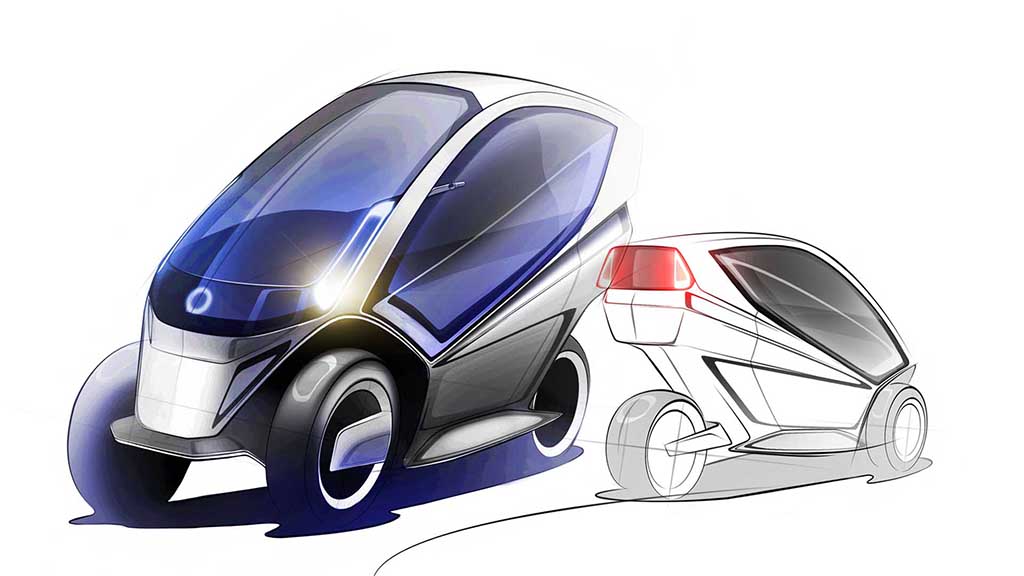
But as long as consumers have to personally purchase or lease them these vehicles are never going to explode from a sales standpoint because they only do 75% of what consumers do with their cars rather than the 99% utility that consumers currently demand. Regardless, any entity that wants to get ahead of this coming economic tidal wave should be developing this platform right now. Lit Motors is trying to be the first company to offer a reasonably priced, freeway capable Cabin Commuter. (I say, “freeway capable” because Toyota has already developed a less capable version of a Cabin Commuter with their iRoad, which gets a lot of things right, but is underbuilt) Lit Motors is developing a pure electric Cabin Commuter, which is without question the highest priority. For the short term market, though, (which will consist of making private sales to individuals) it’s worth considering building a combustion powered version of this platform as well because that’s the mainstream consumer choice right now. Once both an electric and combustion version of this platform have been engineered, then it’s not much extra work to blend the two designs and build a hybrid version as well. Also, for a human controlled Cabin Commuter that is intended to be sold to private individuals rather than as a fleet vehicle, it likely makes sense to build it in a 1+1 passenger configuration rather than a true single occupant vehicle as I advocate everywhere else in this website. I say this because having a second seat behind the driver, even if it’s a relatively small one, means it’s easy to pick a child up from school, or take an adult briefly across town, or, more often, when there isn’t a person sitting in the rear seat, that’s enough room for a carry-on sized bag and a personal bag or a half dozen bags of groceries. Having just that extra bit of utility I think will be of great value for a human controlled vehicle that has to be sold in the current automobile market prior to the advent of The Mobility Cloud.
Here’s a package layout that shows how the human packaging I’m proposing would integrate with the three powertrain options I suggested earlier.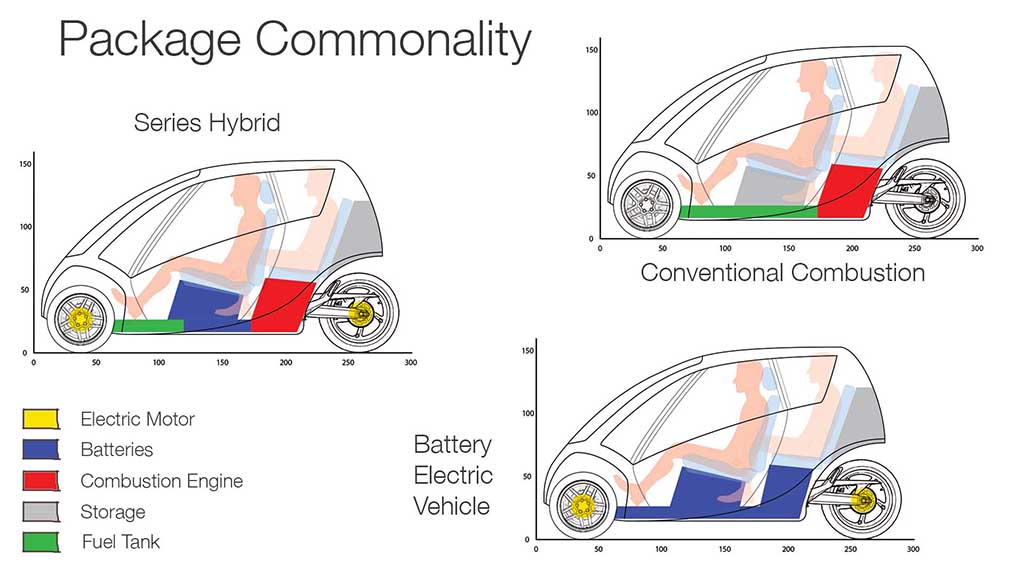
The technical case for a hybrid with this sort of vehicle would be very strong. Hybridization would result in a vehicle that likely achieves well over a hundred miles to the gallon with none of the range limitations of an electric vehicle. The business case for the hybrid would likely be more challenging. Any consumer purchasing this vehicle would be in possession of a machine that could do the following.
- Split lanes like a motorcycle, which is especially useful right now when the world is mostly populated by full size vehicles that spend a lot of time stuck in gridlock in urban environments.
- Travel in any carpool or HOV lane in America that allows motorcycles.
- Allow the consumer to sit in climate controlled comfort, just as comfortably as they would in a full size car, listening to their favorite news program or music.
- Relieve them of having to wear a helmet in most states in America.
- Park anywhere a motorcycle can park.
- Facilitate the consumer to eat, drink, talk on the phone and do all things they’re used to doing in a full size car.
Any entity interested in being competitive in the automotive industry in ten or twenty years should be developing a Cabin Commuter platform right now, not for the purpose of making a couple of bucks selling a niche commuting vehicle, but rather they should do it because it gives that company the platform that will become the dominant vehicle architecture in the urbanized world in the next twenty years.





